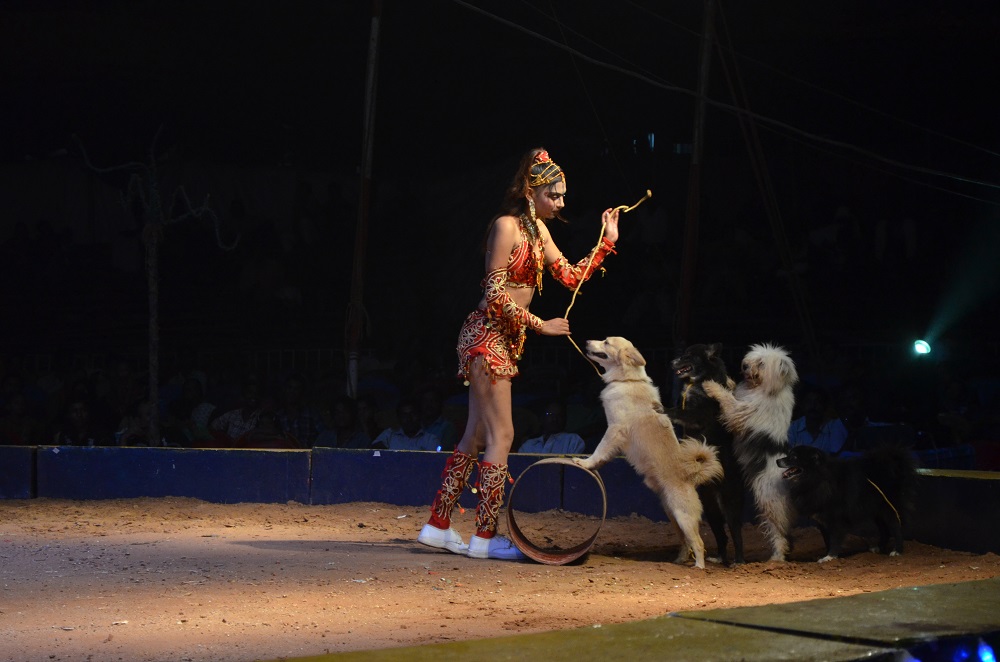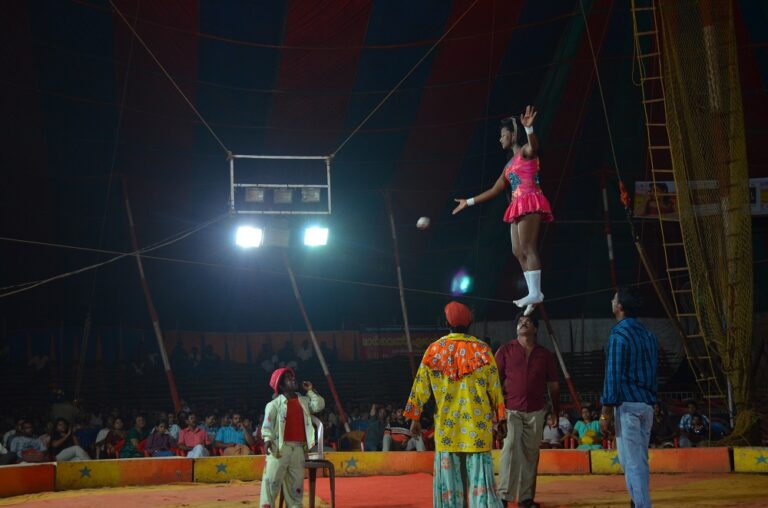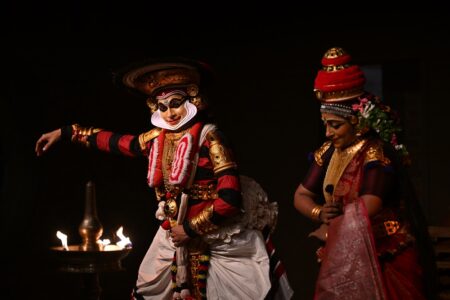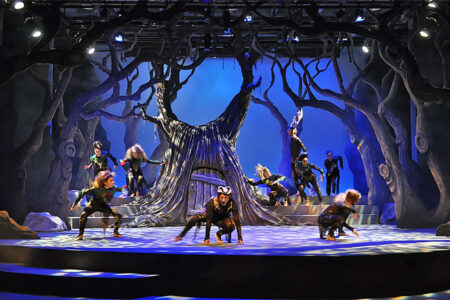The circus tent is a mini village full of stories, myth and realistic fiction.
Along with the location and the script of the circus show, the design and architecture of the circus tent, too, plays an important role in the success of the show. In the last article, we learnt about the circus semiotics and how the design of the tent contributes to the show. We also spoke a little about the collaboration between National School of Drama (NSD) and Grand Circus and the culmination of the collaboration with the show Clown & Clouds.
The transformation of the space inside the tent of Grand Circus belonging to Chandran of Thalasseri into a theatrical arena was tempting. The rehearsal of the theatre part was conducted in the right earnest in Iringalakuda and Kozhikode. All the participating theatre students of the second year NSD too became nomads like circus artistes, as a part of their education.
The curriculum and the politics
The NSD designed this project as a part of their practical training imparted to their students. I also wanted to change the concept of the non-political aspect of Indian circus and their performing activities. It was common knowledge that politics also takes roots from these circus tents.
There is a tendency among some Keralites to change all the spaces on political basis. The result is that such trends do not tend to go well with the real political aspirations and ambitions of the larger society. The intention to bring in a political angle to everything reflects on the selfishness of the political parties and sometimes even their shallow stand points. As a result, all the political ideologies end in slogan shouting or posture publicity and other gimmicks.
To me, the world of circus is different. It is a mini village in all respects. Clad in their colorful costumes these artistes do their amazing feats and return to their abodes – the secluded backyard of the tent itself. In fact, the real story emerges from these dark corridors of their un-secured dwelling places.
Fables, mythology and satire
It has been mentioned that ‘Clowns & Clouds’ is a confluence of theatre and circus – a musical circus project based on abridged versions of different narratives such as The Death of a Joker, a Chinese fable called ‘Xua-Xua’ (pronounced ‘Shwa-shwa’), four stories from the Panchatantra, and Kalidasa’s Meghadootam.
The show was an amalgam of all these stories, inter-twined with the new and old circus items of India and modern theatre techniques. When it came together, the show articulated a different theatrical language. It was also a harmonious blending of a musical rendition of all texts and sequences in a contemporary context.
Most importantly, as we all know, the performance space is a circus tent, where NSD student actors and circus artistes performed at the ring, with related video art projections provided from inside the tent itself. The project has been executed with our theatre artistes (designers and technicians) who knew the modern theatre techniques quite well.
The birth of theatre and other stories
‘The Death of a Joker’ is about a circus clown who dies in an accident during a performance after hearing the shocking news of his wife’s death. In the performance, he appears alive as a phantom and narrates his past, while simultaneously becoming a part of the present with a strong element of satire, which is repeatedly emphasised in the performance. We had developed this story from a combination of a circus artiste’s narration of his life and my experiences and encounters with the world of circus.

‘Xua-Xua’ is about a woman named Xua-Xua (since there was no established language in those days) who lived in the pre-human era. She gets pregnant by her partner Li-Peng and is confused about the bodily changes that start occurring. She gives birth to a baby boy, Lig Lig Le, and is completely perplexed as to whether he is a part of himself having sprouted from her body, or a separate individual! According to this Chinese fable, it was at this moment when Xua-Xua started looking at herself and the child as a spectator, that theatre was born.
The four Panchatantra stories: ‘The Mouse and the Sage’, The Dhobi’s Donkey’, ‘The Brahmin and the Goat’ and ‘The Bird and the Monkey’ offer comical relief at intervals in-between the other performances.
In the excerpt taken from Meghadootam, a certain Yaksha is cursed by Kubera to stay away from his new wife since he was negligent in his duties as he was distracted by searching for cloud messenger to send a message to his wife.
A few selected parts of Meghadootam are integrated into the performance as interludes. Finally we tried, all the four narratives, each one different from the other and with a distinct character of its own, to make them together as one performance, using the visual imagery of circus, art form which doesn’t have a linear narrative structure in anyway.
Click here to read more on the series
Write to us at [email protected]




